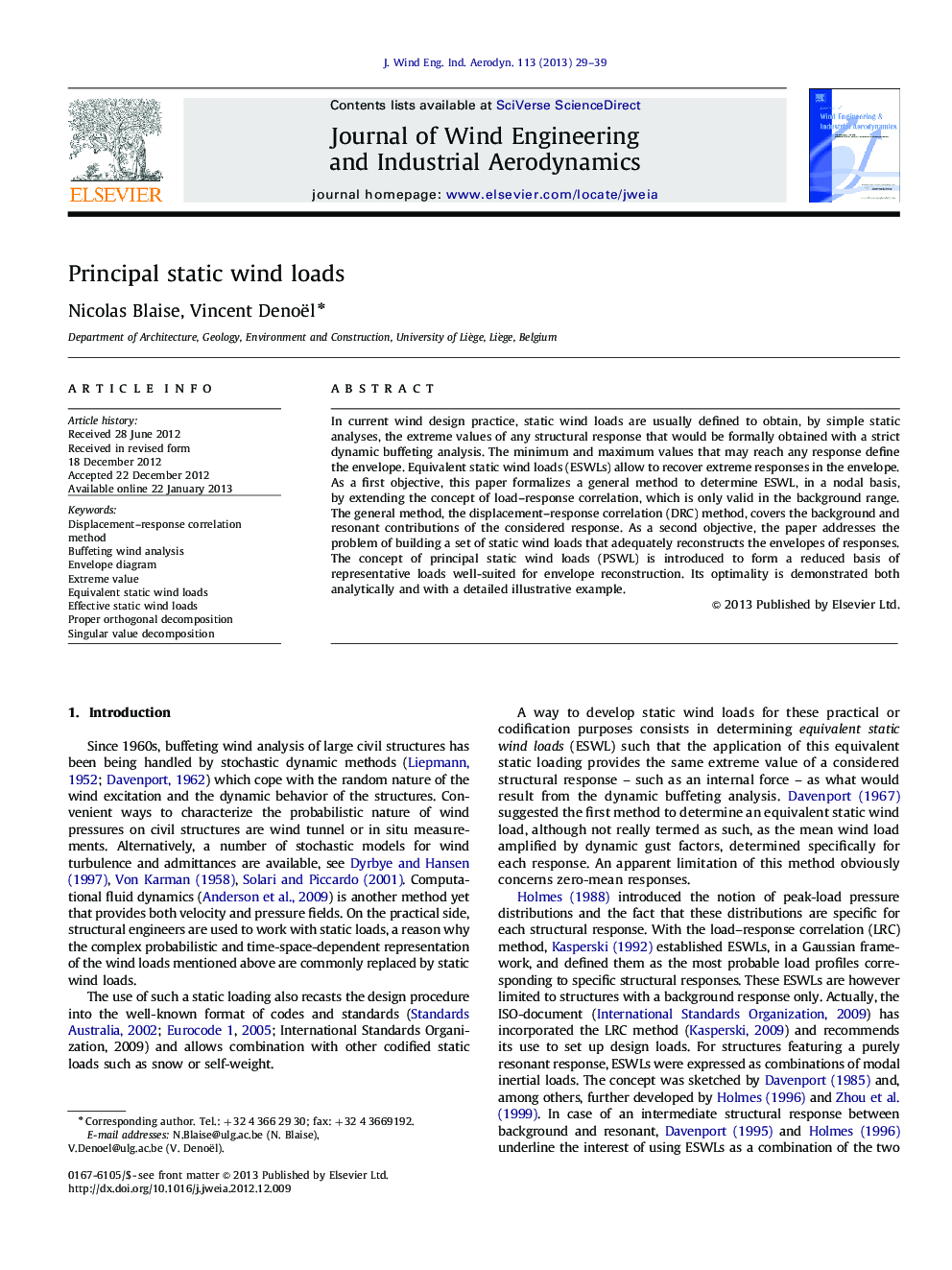| Article ID | Journal | Published Year | Pages | File Type |
|---|---|---|---|---|
| 293061 | Journal of Wind Engineering and Industrial Aerodynamics | 2013 | 11 Pages |
In current wind design practice, static wind loads are usually defined to obtain, by simple static analyses, the extreme values of any structural response that would be formally obtained with a strict dynamic buffeting analysis. The minimum and maximum values that may reach any response define the envelope. Equivalent static wind loads (ESWLs) allow to recover extreme responses in the envelope. As a first objective, this paper formalizes a general method to determine ESWL, in a nodal basis, by extending the concept of load–response correlation, which is only valid in the background range. The general method, the displacement–response correlation (DRC) method, covers the background and resonant contributions of the considered response. As a second objective, the paper addresses the problem of building a set of static wind loads that adequately reconstructs the envelopes of responses. The concept of principal static wind loads (PSWL) is introduced to form a reduced basis of representative loads well-suited for envelope reconstruction. Its optimality is demonstrated both analytically and with a detailed illustrative example.
► Extension of the load–response correlation method to include dynamic contribution. ► Principal static wind loads are obtained by singular value decomposition. ► Principal static wind loads form a basis of loads well-suited for structural design. ► Principal static wind loads are not associated with a unique structural response.
